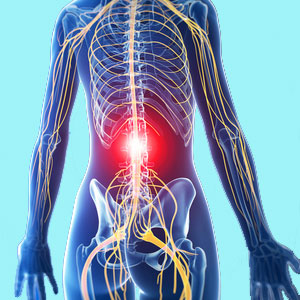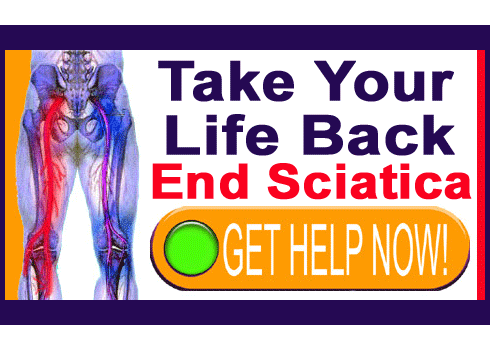
Lower back pain symptoms are the cruel enforcers of lumbar dorsalgia syndromes and the reason why so much dread surrounds the condition. Of course pain is the most common and feared symptom, but many other possible expressions often accompany the discomfort. The additional symptoms might include mechanical issues, functional deficits and neurological expressions experienced locally, regionally or in completely different areas of the body.
Expressed symptomology often provides insight as to the underlying cause of pain. This is why it is so important for patients to document the location, severity, duration and nature of each symptom and note any changes that occur. It is equally important that doctors take time to consider the relevance of each symptom, as well as correlate the clinical expression of symptoms to the expected symptomology of the diagnosis. Unfortunately, this latter recommendation is rarely performed anymore, particularly when the diagnostician is not a neurologist.
This resource section provides a complete view of all possible lumbar back pain symptoms. We will examine each symptomatic expression in its own focused essay and detail why the pain in the lower back is just the start of some patients’ troubles with chronic symptomology.
Focus on Lower Back Pain Symptoms
Symptoms in the lower back are widely considered to be some of the most severe in clinical medicine. Most doctors will agree that the pain itself will render even the strongest patient weak and incapable of performing virtually any physical activity, while the additional expressions of tingling, numbness, weakness, burning and others bring the suffering to a completely different level. Some patients demonstrate loss of sensation or motor functionality in areas outside of the spinal anatomy. Consequences may include incontinence, sexual dysfunction, the inability to stand and even partial or complete paralysis of particular body parts.
Lower back pain symptoms should always be carefully considered before rendering any diagnosis in order to improve the changes for accurate verdicts. In our work, we routinely witness discrepancies between the actual patient symptoms and the clinical expectations based on the diagnosis. It seems that these obvious issues never occurred to the diagnosing physicians, which is a truth which frightens us to the core. It also seems that many physicians have lost the ability to actually “doctor” and are content to “play doctor” as long as it is a profitable ruse.
Various Lumbar Back Pain Symptoms
We like to give each symptom its due attention by providing topical essays that cover every facet of each expression. In the following section, you will find our many dialogs covering the symptoms of lower back pain in unrivaled detail. As each new treatise is published, it will be added to the list of active topics below:
Lower back spasms are unbearably debilitating and strike tremendous fear into the heart of any patient who has endured them.
Lower back pain and sciatica is a very common combination pain syndrome, since the origins of true sciatica always reside in the lumbar or lumbosacral spinal regions.
Numbness in the foot and tingling in the foot are common characteristics of sciatica syndromes.
Lower back and foot pain, just like lower back and leg pain, as well as lower back and knee pain, are all typical sciatica expressions.
Foot drop is also known medically as dorsiflexion deficit. This condition always entails dysfunction of particular nerve roots that serve the motor needs of the frontal foot.
Incontinence and low back pain are often connected due to innervation problems, but might also be independently sourced.
Suffering from a numb lower back? Local numbness is not nearly as common as numbness in the limbs, but can occur in particular patient profiles.
Weakness in lower back is a very common symptom that accompanies many diagnostic theories. Learn why the lower back might feel or actually become less physically capable. Weak legs might accompany weakness n the back and buttocks or might be a completely separate symptom.
Saddle paresthesia describes tingling and numbness in the region of the inner thighs, groin and perineum.
Burning in lower back is a very common patient complaint that often accompanies various types of nerve pain, but can also occur from muscular causation.
A sore low back might not indicate any serious problem. Demonstrating soreness can is actually often caused by very explainable and easily fixable issues.
Do you suffer a chronically tense lower back? Tension in the body is often an indicator of tension within the subconscious mind.
Lower back antalgia describes the body’s organic responses to pain by adjusting posture, gait and functionality.
Lower back pain and sexual dysfunction are sensitive topics of discussion and we know that many of you suffer silently with sexual issues out of fear or embarrassment. We can help!
Lower back pain with IBS might indicate a larger scale mindbody pain syndrome at work or may be completely unrelated. In most patients there is a link to personality, rather than anatomy.
Lower back and hip pain can be caused by sciatica, bursitis, mutual joint degeneration, posture or other possible mechanisms.
Lower back and neck pain enacts torment at both ends of the backbone, further creating fear, discomfort and functional limitation. Neck flexion lower back pain is a subject I know well, since it started a 30 year (and counting) journey of dorsopathy from a patient’s perspective.
Lower back and buttocks pain is one of the most widely seen and agonizing of all lumbar dorsopathy problems. There are many possible explanations.
Lower back and pelvic pain is more common in women and might indicate related or unrelated soft-tissue structural issues, such as pelvic floor dysfunction, as well as the high likelihood for mindbody causation.
Lower back and abdominal pain is the most common dual psychosomatic syndrome. Of course not every patient is suffering due to mindbody causation, but when we see lower back and digestive disorders working hand in hand, we immediately think of a non-structural causative process.
Low back pain and constipation can be caused by innervation problems or mindbody origins in most patients.
Back pain in the kidneys might actually exist in these sensitive organs, but is far more commonly located in the muscles that are in close proximity.
Insomnia from lower back pain deprives patients of their rest and imparts catastrophic effects on general health when it becomes a chronic problem.
Read about all the possible back pain symptoms on the most comprehensive web resource, Cure-Back-Pain.Org.
Surviving Lower Back Pain Symptoms
We completely understand the suffering of lower back pain symptoms. Many of us at The Cure Back Pain Network have suffered from these hellish expressions ourselves and have been further motivated to help others due to our extreme misery. We certainly have far more than just sympathy for you: We have empathy as patients, just like you.
There is no such thing as “untreatable pain”. This is a cop-out used by doctors who have simply given up on finding its true cause and are clueless on how to provide relief outside of their limited means of care. We provide a compete picture when it comes to finding lasting relief from back pain using traditional, complementary, alternative and mindbody practices and can guarantee the right path for you is out there. You just need to find it, implement it and feel better. Is it really that simple? Yes, it can be. You just need to keep trying until you succeed and we are here to help. Check out our resource section covering lower back pain relief for more details and also be sure to read our low back pain treatment guide to learn about a huge diversity of therapeutic offerings.
Lower Back Pain > Lower Back Pain Symptoms






